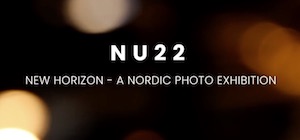 On February 2, Staten Island Chuck, our local meteorologist of the marmot persuasion, prognosticated an early spring. Struck me as a long shot, especially since it was then freezing outside and Chuck’s rival, Punxsutawney Phil, expected the big chill to drag on. But Chuck has a strong record — only one wrong call since 2010. I certainly hope he’s on the money. I’ve already had enough winter to last me until … next winter.
On February 2, Staten Island Chuck, our local meteorologist of the marmot persuasion, prognosticated an early spring. Struck me as a long shot, especially since it was then freezing outside and Chuck’s rival, Punxsutawney Phil, expected the big chill to drag on. But Chuck has a strong record — only one wrong call since 2010. I certainly hope he’s on the money. I’ve already had enough winter to last me until … next winter.
•
SoHo Photo Gallery, founded in downtown Manhattan in 1971, is one of the earliest non-profit photographers’ collectives, and one of the few to have lasted half a century. In January the project initiated a celebration of its golden anniversary (one year delayed, due to COVID), as part of which they invited me to moderate a Zoom panel discussion, titled “SoHo Photo Founding Members Look Back — and Ahead,” with Harvey Stein, Catherine Ursillo, Frank Tartaglia, and David Chalk. This took place on the evening of January 20th, before a Zoom audience of about 60.
 They recorded the session, which is now available on Vimeo. Click here to watch. The conversation doesn’t just dwell on the past, but addresses the organization’s present and its future in the new, predominantly digital and virtual cultural environment.
They recorded the session, which is now available on Vimeo. Click here to watch. The conversation doesn’t just dwell on the past, but addresses the organization’s present and its future in the new, predominantly digital and virtual cultural environment.
SoHo Photo has also prepared and published a 50-year “timeline” of the organization’s inception, history, and activities. You can download that here. And you’ll find archives of its exhibitions, videos of previous lectures, and other resources at the SoHo Photo Gallery website.
And at the gallery’s YouTube channel you can watch the 40th Anniversary Founder’s Panel, for which I also served as moderator.
•
As I noted last fall, for the past several years I have provided commentary on a shifting set of collaborations between a photography program at Yrkesinstitutet Prakticum in Helsinki, Finland, which sponsors and organizes the project, and other programs for vocational education students in the Nordic countries. The contributing students range in age from the late teens to the early forties.
 These cross-sections take the form of physical exhibitions while also going online, in both forms under the rubric “Nu” plus the year. So they titled this one “NU22.” Its theme was “New Horizon.” And it will be accompanied also by a printed catalog covering both this year’s project and last year’s. (The link will take you to a website that includes the 2020, 2021, and 2022 editions.)
These cross-sections take the form of physical exhibitions while also going online, in both forms under the rubric “Nu” plus the year. So they titled this one “NU22.” Its theme was “New Horizon.” And it will be accompanied also by a printed catalog covering both this year’s project and last year’s. (The link will take you to a website that includes the 2020, 2021, and 2022 editions.)
You’ll find my response to NU22 here, titled “The Sky’s the Limit.” From the introduction:
Einar Jarl Björgvinsson, Joseph Cardenas, Guðmundur Óli Gunnarsson, and Arnfríður Ósk Jónsdóttir all address the elephant in the room — the pandemic — by utilizing what has become the universal symbol thereof, the suddenly ubiquitous face mask.
Imagining what comes next, these staged images suggest, requires confronting the here and now, including the possibility that COVID-19 may become a permanent feature of the social landscape in one form or another. If the pandemic has taught us how to live by ourselves, truly surviving it will involve re-learning how to live with each other, to resume our lives as social beings.
•
Cleaning Out the Fridge
Atop my list of resolutions for 2022, I have committed myself to the Herculean task of cleaning out the Augean stables of my professional life. This chore, which I undertake periodically, involves confronting the endless amount of both paper that accumulates around me wherever I find myself and digital files that proliferate on both my desktop and laptop Macs.
As I wrote in February 2010, in the early days of this blog,
I accumulate a stockpile of ideas, leads, snippets as part of my working method for generating this blog. From that mulch heap I choose the ones that seem worth pursuing, a selection process involving arcane and idiosyncratic techniques. Inevitably, a lot of promising material never moves to the front burner. Some of it, however, seems worth passing along before it succumbs to the information equivalent of freezer burn. This is my way of cleaning out the fridge.
I have begun by eliminating everything in the Drafts folder of my WordPress interface that has become irrelevant or hopelessly outdated, or about which it turns out I have nothing of value to say. I’ll retain and reconsider works-in-progress that remain relevant, for possible revising, updating, and polishing. This material does not come from my backlog of previously published articles from books and periodicals, which have their own category here, “From the Archives.” So, if you come across something here that includes some references to events and reports going back a few years, know that I haven’t posted it as filler; I think it’s worth writing, and publishing, and hope you find it worth reading.
•
The AARP Knows Where You Live
Trust me on this: Even squirreled away in witness protection by the CIA or the FBI, under an assumed name, you will receive, shortly before your 50th birthday, an invitation to join the American Association of Retired People. I live a relatively high-profile life, so it didn’t surprise me to get that letter a little over a quarter-century ago. And I responded in the only way that made sense: I signed up for the discounted multi-year membership.
 As a result, I receive their several publications, in which I occasionally find nuggets of useful information and advice. Going through some back issues in a decluttering effort, I found and have taken to heart this particular bit from the AARP Bulletin, embedded as no. 83 in Mike Zimmerman’s “Your Guide to a Healthier, Happier, Longer Life: Get started with these 99 essential health tips,” from the January/February 2019 issue:
As a result, I receive their several publications, in which I occasionally find nuggets of useful information and advice. Going through some back issues in a decluttering effort, I found and have taken to heart this particular bit from the AARP Bulletin, embedded as no. 83 in Mike Zimmerman’s “Your Guide to a Healthier, Happier, Longer Life: Get started with these 99 essential health tips,” from the January/February 2019 issue:
Don’t cling to a dying profession. Moving on to something new is the new normal. In an AARP report, about two-thirds of workers 51 and older who changed jobs ended up moving to different occupations entirely. Which may sound stressful until you actually do it and find that you have an exciting new career underway.
An hour later, unaware that I had read and started chewing on that, my wife Anna asked me for a definition of the word “gig,” in the context of the neologism “gig economy.” In explaining it, I noted that I’ve worked in the gig economy for my entire adult life.
But the resonant phrase is that headline of item 83: Don’t cling to a dying profession. Because if anything describes my condition at this juncture, and for some years back, there you have it: I stubbornly cling to a dying profession, or, more accurately, my own eccentric mélange of such — criticism, historianship, investigative journalism, informed cultural reportage.
I have said so, in more or less those words, on numerous occasions over the past several decades, keeping on keeping on, more out of habit than out of any conviction that it matters urgently to anyone but myself … if that. Yet thinking out loud and organizing that thought on paper or its pixelated equivalent has become a way of life — my lapsed-Buddhist practice, if you will, my version of mindfulness. I don’t know what I’d do with myself otherwise: reason enough for keeping the faith.
•
Brian Eno on the Non-Neutrality of Media
Those who continue to argue that photography is an unbiased medium and photographs are neutral artifacts would profit by pondering this statement about a very different recording technology by a master composer and musician:
You become acutely aware of the different sort of recording aesthetics when you hear things next to each other. When you hear a contemporary recording followed immediately, as often happens when you have shuffling forms like Spotify and the iPod, by something from 1958, you think, ‘My God, he was so close to the microphone then. Or, listen to those strings. they’ve got a whole orchestra there, but it’s about at the level of a very quiet high-hat.’
The differences become so apparent when things are next to each other, and I think that makes you much more acutely aware of the medium of recording than we’ve ever been, because, if you think about it, it’s only now that people start thinking about recording as a non-absolute form. In the past, we’ve thought about recording as transcription, basically. Something happens and you make a recording of it, and the recording is faithful. Now you realize, when you hear things one after another, that recording has never been faithful. Recording has always been a stylistic choice, there’s always been a separate choice that’s being made.
So suddenly, the technical becomes seen as the aesthetic. What was thought to be technical is suddenly realized to have been aesthetic.
From “A conversation with Brian Eno: ‘We are all singing. We call it speech, but we’re singing to each other,'” Los Angeles Times, July 5, 2011. The entire dialogue will reward your attention.
•
This post supported by a donation from Harry Wilks.
•
 Special offer: If you want me to either continue pursuing a particular subject or give you a break and (for one post) write on a topic — my choice — other than the current main story, make a donation of $50 via the PayPal widget below, indicating your preference in a note accompanying your donation. I’ll credit you as that new post’s sponsor, and link to a website of your choosing.
Special offer: If you want me to either continue pursuing a particular subject or give you a break and (for one post) write on a topic — my choice — other than the current main story, make a donation of $50 via the PayPal widget below, indicating your preference in a note accompanying your donation. I’ll credit you as that new post’s sponsor, and link to a website of your choosing.
And, as a bonus, I’ll send you a signed copy of my new book, poetic license / poetic justice — published under my full name, Allan Douglass Coleman, which I use for my creative writing.






Keep up the great work!